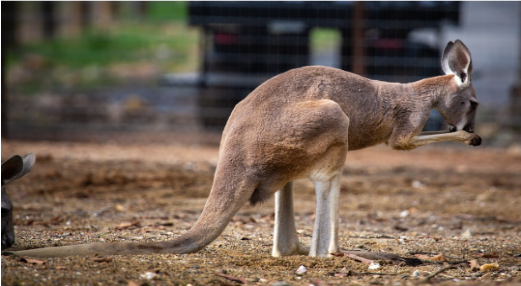Meet the Wallaby
The Wallaby is a medium-sized macropod marsupial, closely related to kangaroos, and commonly found in the temperate and fertile regions of eastern Australia and Tasmania. These agile herbivores are known for their powerful hind legs, which allow them to leap great distances and move swiftly through forests, grasslands, and rocky terrains. Unlike their larger kangaroo relatives, wallabies are more compact and solitary, often foraging for grasses, leaves, and fruits at dawn and dusk. As marsupials, female wallabies carry and nurse their tiny, underdeveloped joeys in their pouches until they are strong enough to explore the world on their own. With their keen senses and excellent camouflage, wallabies are well-adapted to avoiding predators like dingoes and birds of prey. Despite habitat loss in some areas, they remain a resilient and iconic symbol of Australia’s diverse wildlife.
Park Location: Animal Walkabout
About the Wallaby
| Conservation Status | Vulnerable |
| Height | 31 Inches (80 cm) |
| Length | 11.8 – 39.4 Inches (30 – 100 cm) |
| Weight | 30.4 – 40.9 lbs (13.8 – 18.6 kg) |
| Diet | Diet consists of grasses, roots, tree leaves, and weeds. |
| Gestation Period | 30 Days |
| Life Span | 7 – 15 Years |
| Top Speed | 40 mph (64 km/h) |
| Threats | Historical and current threats include hunting, predation, habitat loss, competition with other species and loss of genetic diversity. |



